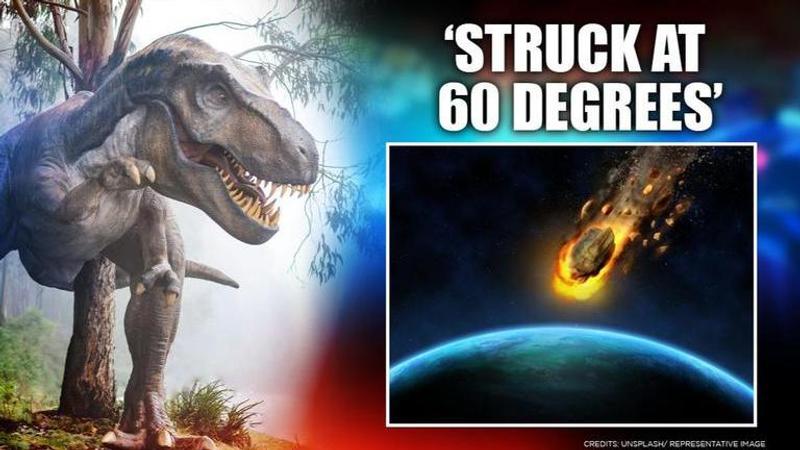Published 12:20 IST, June 4th 2020
Study: Asteroid that led to extinction of dinosaurs hit at 'deadliest possible' angle
Study was led by Professor Gareth Collins,astronomer at Imperial College London in Department of Earth Science and Engineering, and his team of researchers.

In new research, astronomers have found that the asteroid which led to the extinction of dinosaurs 66 million years ago hit Earth at the "deadliest possible" angle, at 200-kilometer (125 miles) Chicxulub crater in present-day Mexico. Led by Professor Gareth Collins, an astronomer at Imperial College London in Department of Earth Science and Engineering, and his team of researchers, the study was published in the scientific journal, Nature Communications. It revealed the trajectory and direction of the impact of the asteroid on Earth.
The study in the peer-reviewed journal revealed that the gigantic asteroid struck at an angle of about 60 degrees, thereby maximizing the amount of climate-changing gases thrust into the upper atmosphere. Further, it unleashed billions of tons of sulphur into the atmosphere, blocking the sun, and causing a nuclear winter that solely wiped out the existence of the dinosaurs and overall 75 percent of life on Earth. Examining the shape of the Chicxulub meteorite crater in Mexico, the researchers studied “the initial impact to the moment the final crater in the first-ever fully 3D simulations that reproduced the whole event.”
Further, Collins revealed, the upper layers of earth around the Chicxulub crater contained high amounts of water, the porous carbonate and evaporite rocks. So, therefore, when struck by the asteroid, vast amounts of carbon dioxide, sulfur, and water vapor released into the atmosphere.
The sulphur would have been particularly hazardous as it rapidly forms aerosols – tiny particles that would have blocked the sun’s rays, halting photosynthesis in plants and rapidly cooling the climate. This eventually contributed to the mass extinction event that killed 75 per cent of life on Earth, Collins said in the study.
Didn't hit vertical
As per the study, if the asteroid came straight overhead, it would be more of a glancing blow, and less rock would have been vaporized comparatively. However, the 66 Ma asteroid came in 60 degrees, which is ideal for hurling vapour into the air, as per the astronomers’ key findings from the study.
Updated 12:20 IST, June 4th 2020








